Pelargonium, or Kalachik, is one of the most popular and widespread decorative cultures, which has been actively grown as a room flower for many years. It is a fairly ancient plant that gained its worldwide popularity in the 16th century due to wandering botanists who brought culture to Europe.
South Africa is considered the birthplace of Kalachik, it was from there that the plant got into English gardens, and later spread throughout the world. Pelargonium is an unpretentious flower due to which it is actively grown at home on all continents of the globe, because caring for it is quite simple and does not take much time and effort even from beginning flower growers.
Content
Pelargonium characteristic
Pelargonium is a genus of perennial plants belonging to the Geraniev family. There are about 300 different types of pelargonium, which differ from each other in external characteristics. In addition, each type of geranium has a peculiar smell: a flower, depending on the type, can exude a citrus, nutmeg and even chocolate aroma.
The stems of the shrub can be straight or branched, but the leaves are found in a variety of forms, from simple to palmate-dissected. Pelargonium flowers are collected in umbellate inflorescences, depending on the type, inflorescences can be either small or multi-flowered. The texture and color of the petals also depends on the type of plant. For this reason, you can find both one-color and two-color pelargoniums with smooth or double petals. Kalachik flowers can be painted in a wide variety of colors and shades.
The result of flowering is the appearance of box-fruits on which sepals are present. The fruits of the flower open like a beak of a bird, due to which the plant was assigned to the Geraniev family.
However, despite the widespread opinion, pelargonium (Pelargonium) and geranium (Geranium) are not one type of plant, they are completely different cultures belonging to the same family. Geranium is a rather frost-resistant plant that grows well in the wild, but pelargonium loves to grow in a warm climate, so it is actively grown indoors.
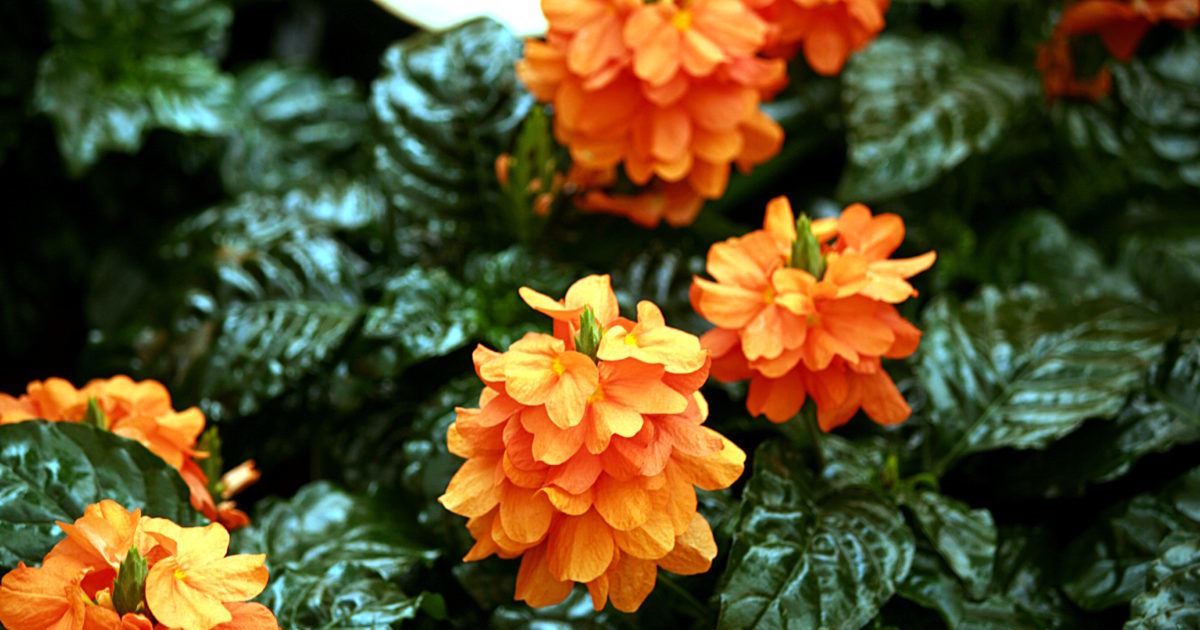 You may be interested in:
You may be interested in:Pelargonium home care for beginners
Caring for a plant at home is not a complex and time-consuming process, even for beginner gardeners. However, despite the unpretentiousness of the flower, adhering to some recommendations for its care is still necessary.
Lighting
It will not be possible to grow beautifully blooming pelargonium in partial shade or shadow, since in insufficient light the shrub simply ceases to give inflorescences. In addition, in a dark room, plant growth is suspended, and its leaves lose their decorative appearance.
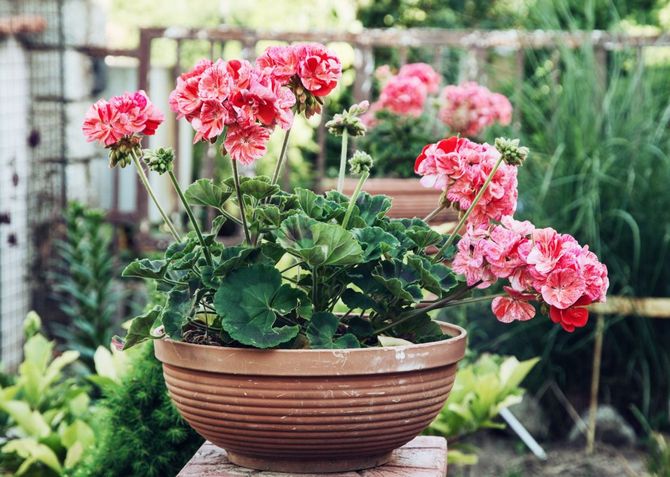
When choosing a place to place a container with Kalachik, it should be borne in mind that he needs bright diffused lighting. However, prolonged exposure to direct sunlight on the ground part of the bush should be avoided, as this is fraught with the appearance of burns.
Temperature and humidity
Pelargonium is a rather thermophilic flower, which is recommended to be grown at a temperature of 18 to 25 ° C. During the resting period of the plant, it is desirable to reduce the air temperature in the room to 15-12 ° C. But if it is impossible to keep the shrub at this temperature, he should provide additional lighting. Since the warmer the room in which Kalachik grows, the longer it should be daylight hours.
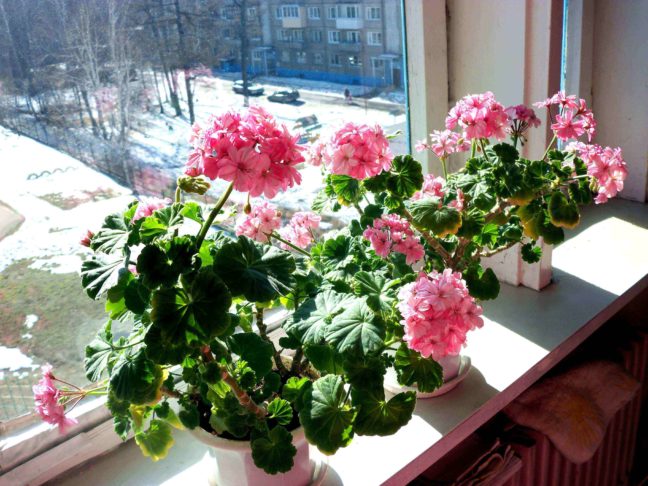
The shrub likes moderate humidity and poorly perceives spraying of foliage and other contact ways of humidifying the air. To ensure the optimum level of humidity, it is enough to prevent the soil from drying out deeply.
Watering and feeding
Pelargonium is a guest from Africa, for this reason the plant does not tolerate excessive watering and responds to excess moisture by hanging foliage. A kalachik is able to accumulate water in itself, so it must be watered only after the topsoil has dried.
During the period of active growth, which lasts from spring to autumn, the flower needs additional nutrition. The plant is recommended to be fed with liquid fertilizers, every 2 weeks. When feeding a flower, the main thing is to apply fertilizer exclusively to slightly moistened soil. As fertilizer, you can use any fertilizer for decorative crops with a high content of phosphorus and potassium.
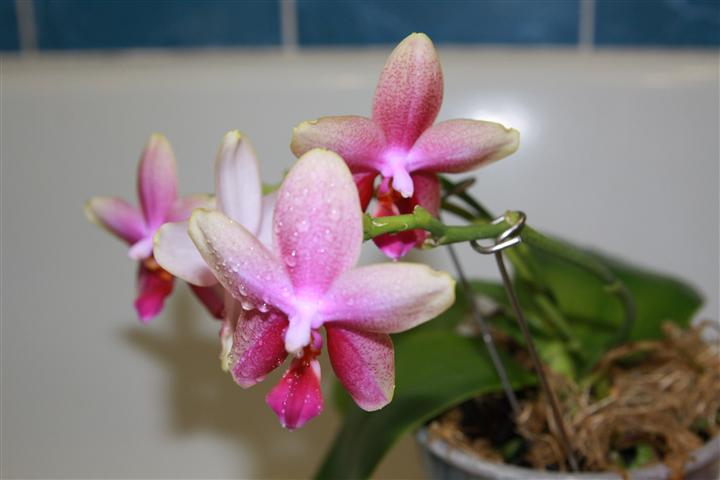 You may be interested in:
You may be interested in:Flowering Care
During flowering, Kalachik requires more careful care, since providing the flowers with the right nutrition depletes it. The plant, as a rule, blooms from spring to autumn, because in the winter season it does not have enough natural light. Periodic ventilation contributes to a brighter and longer flowering.
During the opening of the buds, the plant should not be sprayed, as this has a bad effect on the condition of the flowers. Pelargonium flowering is the reason for making complex mineral fertilizers for flowering ornamental crops at least once a month.
Pruning and pinching
Pruning of the flower should be done exclusively in early spring, when the plant just moved away from the "hibernation". Annual pruning of the shrub returns to its decorative appearance and stimulates flowering. Shoots that grow from the leaf sinuses must be removed, as they significantly spoil the appearance. Also, dead leaves, old and large stems of the bush are removed, so that no more than 5 growth points remain. After the procedure, the indoor flower is recommended to be fed with vitamin supplements.
It is advisable to pinch at the moment the flower leaves the sleep mode, which occurs in the last month of winter or in early spring. Pinching is a process during which points of further growth are removed in order to increase the bushiness of shoots.
Pinching the plant depends on the method of growing the bush. A Kalachik grown from seeds is attached on the 6th sheet, and from the cuttings - on the 8th.In the process of pinching, small shoots growing inside the bush should also be removed, since they interfere with the free passage of air and contribute to stagnation of moisture.
Diseases and Pests
Most diseases that can affect Kalachik are the cause of improper flower care:
- So, excessive watering can cause the defeat of pelargonium with gray rot, a black leg and the appearance of edema on leaf plates. Excessive watering and stagnation of moisture also lead to decay of the root system.
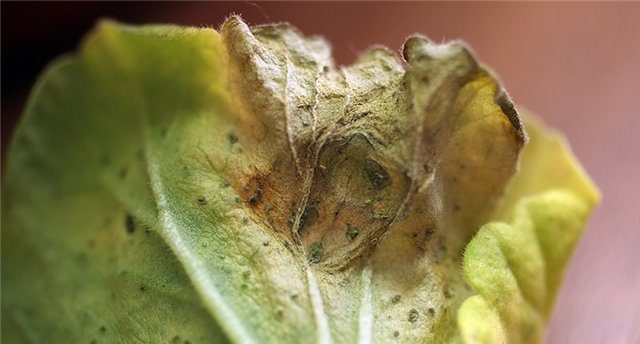
Gray rot - The plant is quite often affected by rust, which manifests itself in the form of red spots of a clearly defined shape on leaf plates. The cause of this ailment is poor-quality water for irrigation or contaminated air. To cure a room culture from rust, it is necessary to remove the leaves, stop watering and treat the flower with fungicides.
- The flower can also be affected by parasites, namely aphids, white-wings and ticks. You can get rid of insects by treating the shrub with a weak solution of potassium permanganate or insecticides.
Features of indoor plant care in autumn and winter
For abundant and lush flowering of pelargonium, it is necessary to provide an adequate period of rest. In the cold season, the flower is recommended to be kept at a temperature in the range of 12-15 ° C. In autumn and winter, when daylight hours become shorter, photophilic pelargonium needs additional artificial lighting using phytolamps.
Prepare the plant for the rest period from autumn. To do this, all painful and yellow leaves are removed, and the flower pot moves to a place with good lighting. Additional lighting will preserve the decorative qualities of the shrub and provide intense flowering in the spring.
Also at this time of the year it is necessary to reduce the frequency of irrigation and stop fertilizer application. However, when the flower is kept in a warm room, rest does not occur and it is not recommended to reduce the number of waterings, as this will lead to deep drying of the soil. The plant does not tolerate exposure to cold air, so it should be removed from the windowsill when ventilating the room.
Features of caring for different types of pelargonium
There are many types of pelargonium, which are combined into separate varietal groups. The most popular varieties of ornamental culture are Zonal, Royal, Fragrant and Conjugate pelargonium.
Ampelic, or Acupunctal
The ivy, or Ampelic, pelargonium differs from the rest of the family in its long shoots, due to which it is used to decorate balconies and verandas. The plant can be grown in semi-open rooms and because of its ability to tolerate exposure to direct sunlight.
Growing a flower will not take much time and effort, but it is worth remembering that, despite the fact that this type of pelargonium tolerates a decrease in air temperature, frost is destructive for it. Therefore, with the threat of frost, the flower must be moved to the room.
Ampel varieties respond well to watering with a mixture of milk and water. If the flower will not be additionally illuminated during the winter period, it is recommended to cut off its ground part. During the dormant period, the shrub can be kept at temperatures up to 7 ° C. But the flower, which was kept in a warm room in winter, blooms a little later than after hibernation.
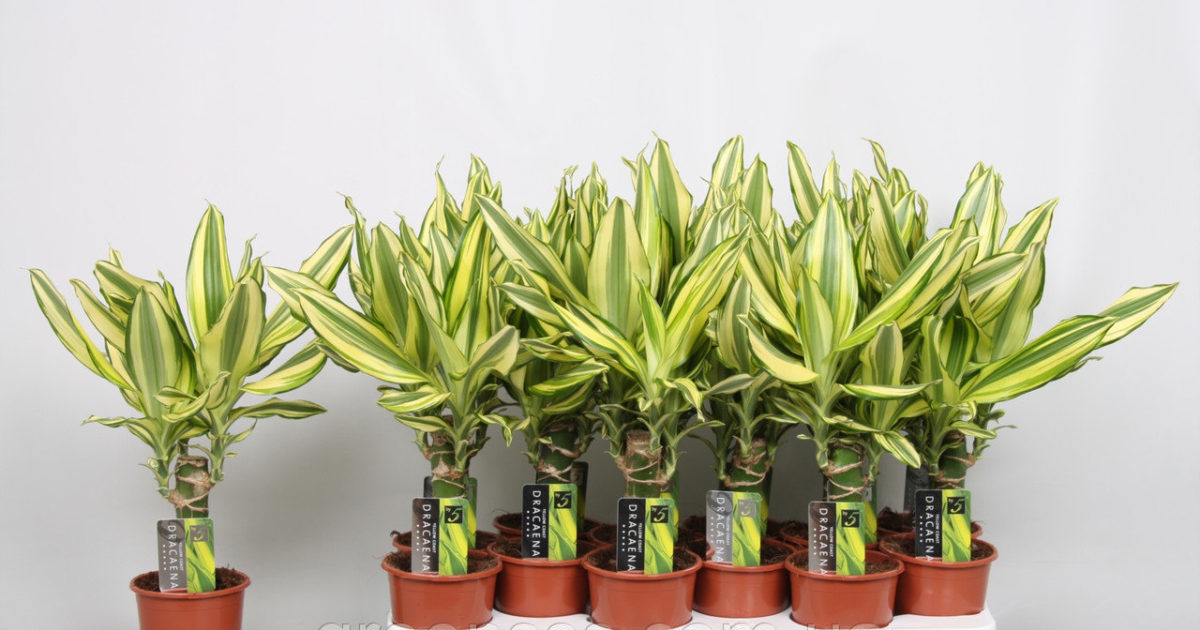 You may be interested in:
You may be interested in:Fragrant pelargonium
Fragrant pelargonium got its name and popularity due to the aroma of leaves. This species is often grown in apartments because of its compact size, and miniature green leaves only add decorativeness to the culture. This species is photophilous and can grow even under the influence of direct rays of the sun. Daylight hours for shrubs should be at least 12 hours. The lack of light will cause the leaves of the fragrant Kalachik to lose their aroma, for which it is so appreciated in modern floriculture.
The flower needs frequent pruning and pinching, because otherwise it will lose its decorative effect and turn into a randomly curving bush. It is necessary to begin the formation of a bush from the first days of its life. Fragrant pelargonium loves space, so it is recommended to grow it away from other indoor plants. During dormancy, the flower must be kept at a temperature of 8 to 10 degrees, otherwise the chances of flowering will be significantly reduced.
Zone Pelargonium
Zonal view - the most common and well-known type of pelargonium, characterized by an erect stem. This species is absolutely not picky about the place of growth, so it can be grown both on a flower bed and indoors. Zonal pelargonium, unlike other varieties, blooms for a long time, its flowering period lasts more than 6 months.
The flower needs a lot of fresh air and light, so in the summer it is recommended to take the bush to the garden or balcony. However, it is worth remembering that drafts and sudden changes in temperature for the shrub are destructive. In winter, Kalachik of this variety is recommended to be removed from the window sill in order to avoid contact of its foliage with cold glass. When choosing a soil mixture for planting shrubs, fertile soils should be avoided, since flowering in such soil slows down.
Grandiflora
Grandiflora, or Royal Pelargonium, is the most capricious species of the entire Geranium family. It differs in large flowers, which can reach 7 cm in diameter. In addition, the shrub does not exude an aroma that other species can boast of. The variety does not tolerate heat, so it is recommended to shade the plant on especially hot and dry days.
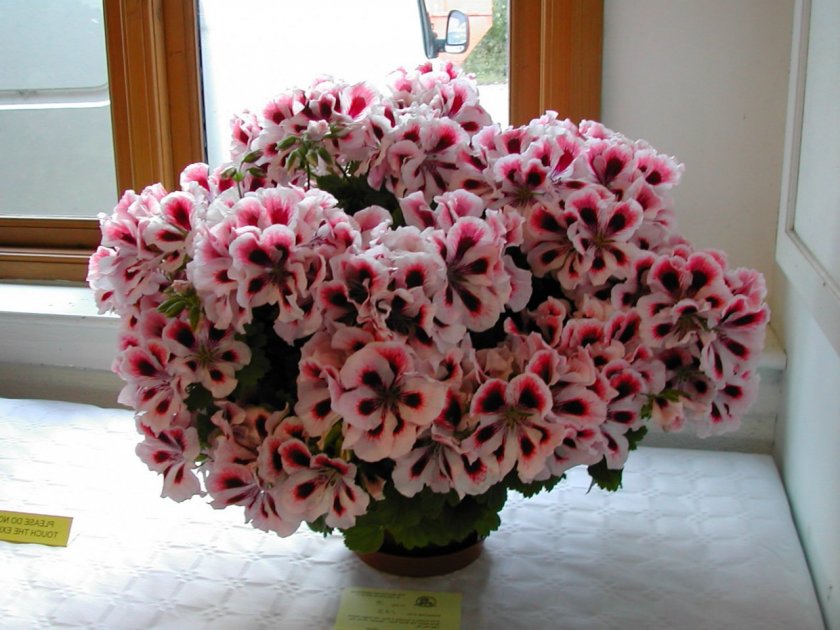
Grandiflora is not suitable for growing on a balcony or in the open field, since the flower does not tolerate sudden changes in temperature, direct rays of the sun, drafts and wind. Unlike other representatives of its kind, the Royal variety does not accumulate moisture and does not tolerate the drying of even the top layer of soil. It is better to prune Grandiflora immediately after flowering, which, as a rule, falls on the first days of September. Pruning shrubs in early spring can lead to a lack of flowering.
The benefits and harms of pelargonium for the home
Pelargonium is a popular indoor culture that many flower growers love and appreciate. In addition to decorative qualities, the shrub has medicinal properties that have found their application in traditional medicine:
- Many flower growers grow pelargonium for medicinal purposes, because with the help of means on its basis otitis media, colds, cataracts, migraines and even depression are treated.
- In addition, to improve the general state of health, it is quite enough to inhale the aroma that exudes the shrub. The essential oils contained in the plant have a beneficial effect on the human nervous system, remove fatigue and relieve stress.
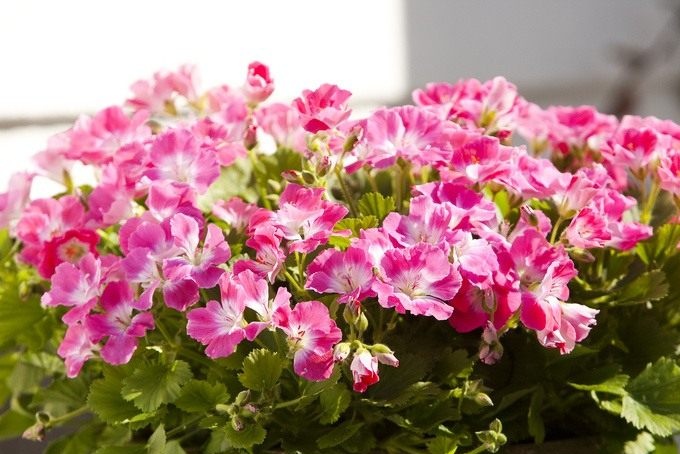
Thanks to this property of essential oils, pelargonium is considered to be the guardian of the hearth and calm in the house. - The flower purifies the air, which contributes to a sound sleep, so many gardeners prefer to put it in the bedrooms.
- Growing Kalachik in the house will help get rid of moths, mosquitoes, flies and other pests, because the smell that he exudes scares off insects.
However, when choosing a shrub for the house, it is worth understanding that it can bring not only benefit but also harm to their owners:
- With extreme caution, pelargonium should be brought to the house where children or people prone to allergies live. Kalachik's aroma is a strong allergen that can trigger a runny nose, lacrimation, and coughing.
- The flower pot should be placed in a place inaccessible to animals, which can feast on its parts, as this can lead to poisoning.
Common Growing Questions
Due to the wide variety of pelargoniums, beginning gardeners do not always know in what conditions it is recommended to contain one or another variety.
Pelargonium is a luxuriantly flowering and unpretentious plant that will become not only beautiful, but also a useful decoration of any home. It is important not to forget about gentle moderate watering, bright lighting and a dormant period, as well as that the plant can cause allergies.

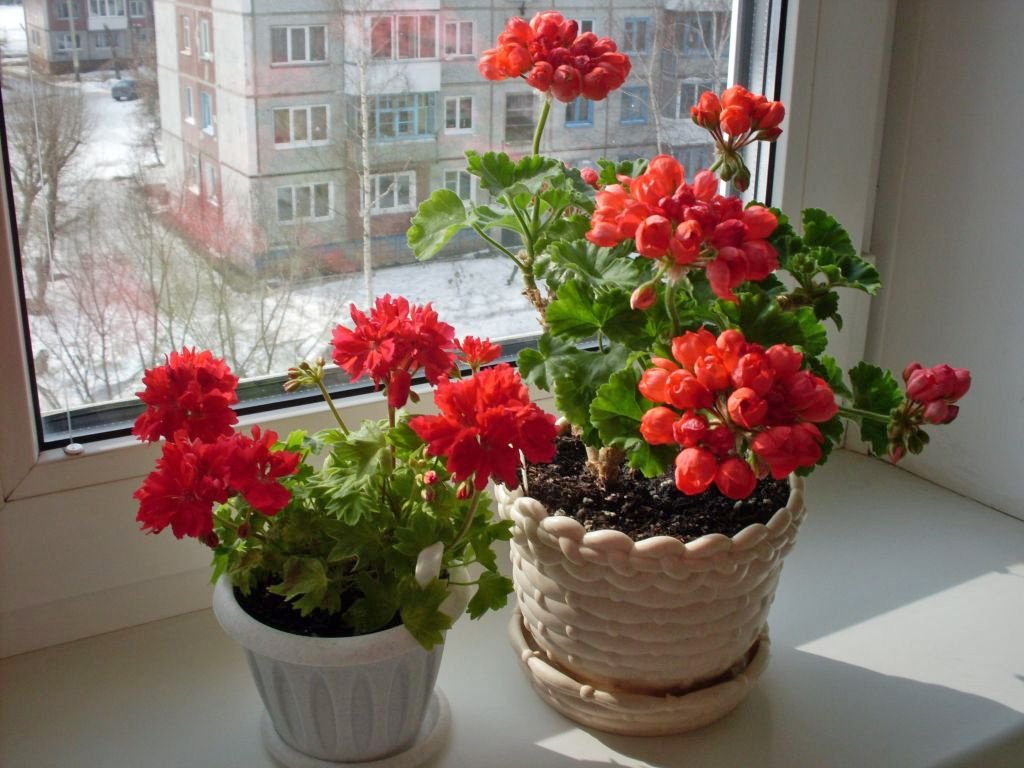
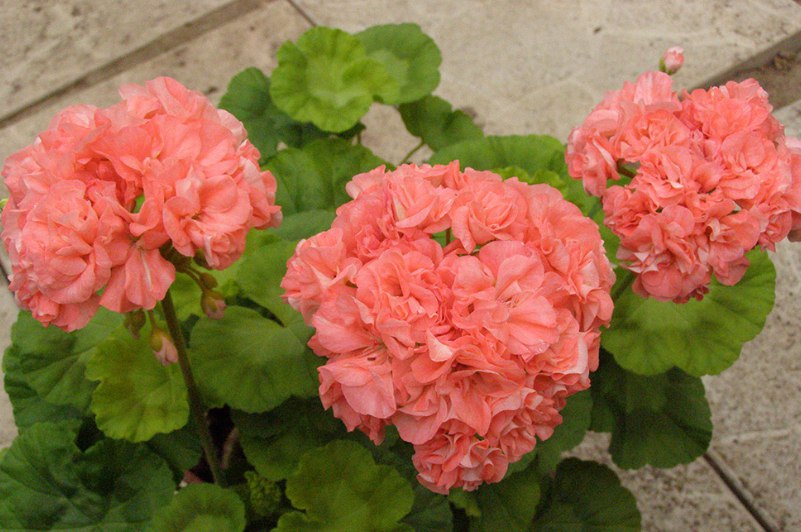
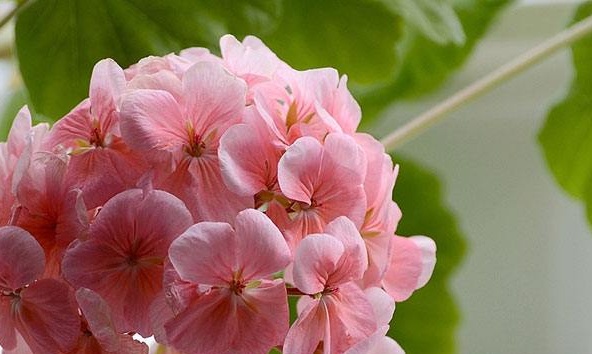
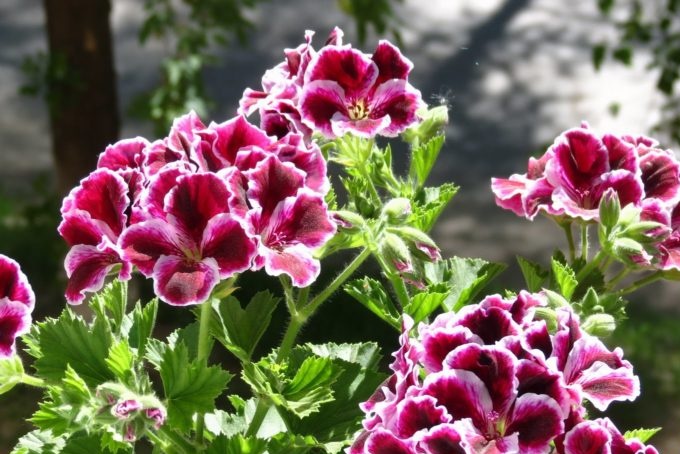
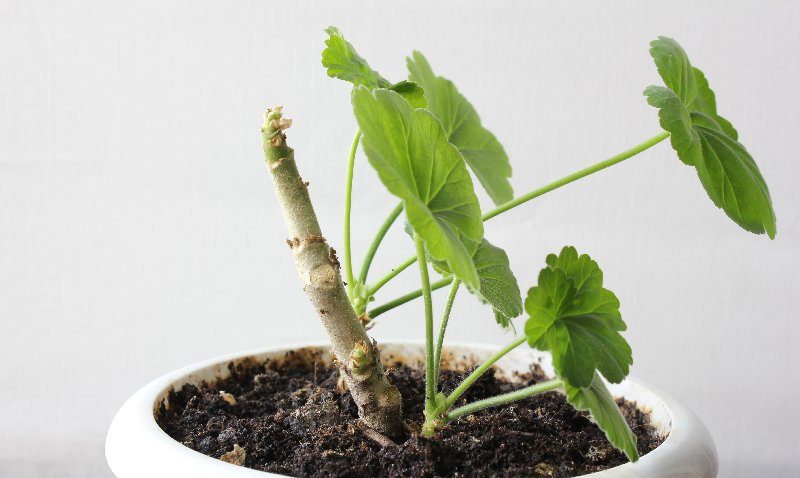

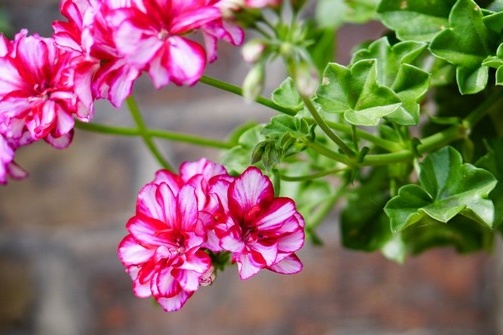
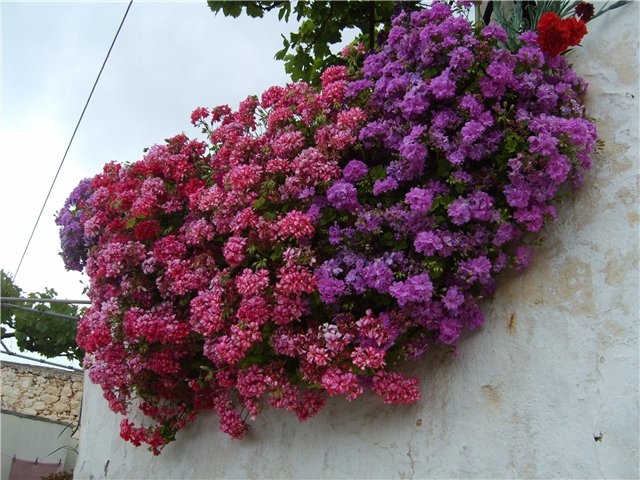
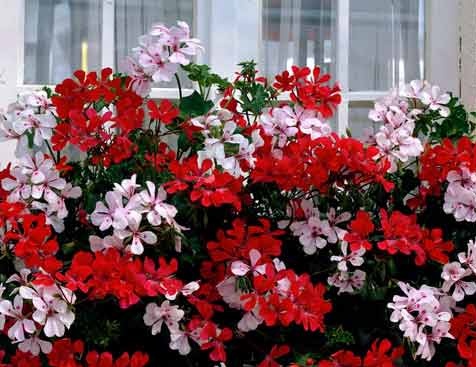
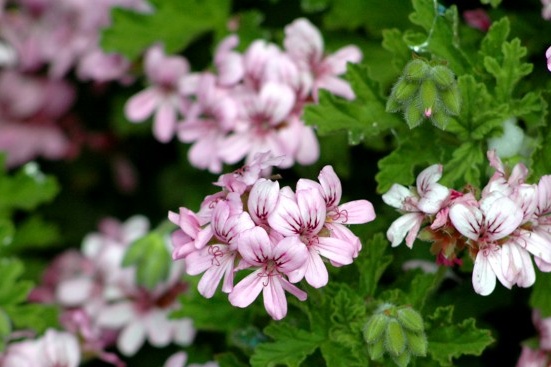

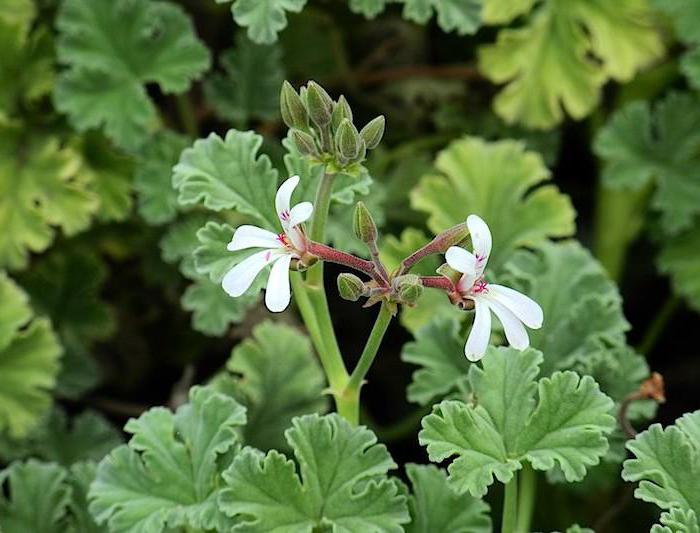
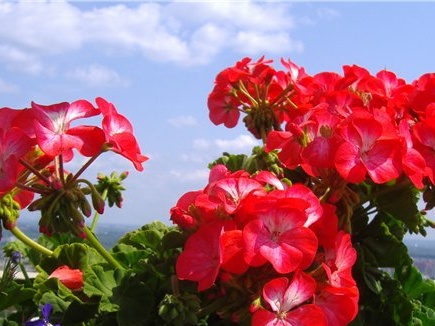
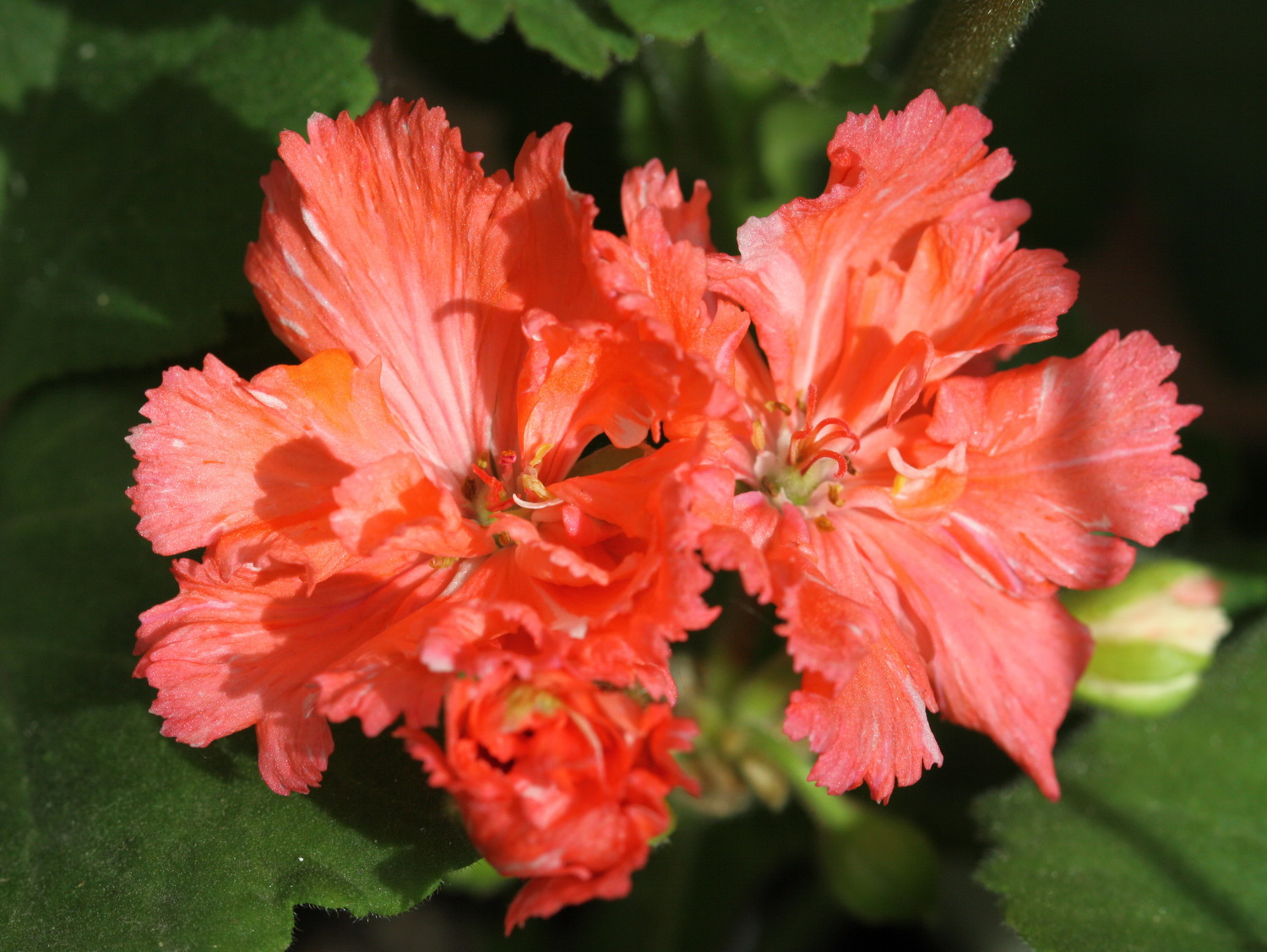



 Sow in the ground, without seedlings: 10 beautiful and unpretentious flowers
Sow in the ground, without seedlings: 10 beautiful and unpretentious flowers Platicodon planting and outdoor care
Platicodon planting and outdoor care Hosta - planting and care in the open ground in the Urals
Hosta - planting and care in the open ground in the Urals Oleander - care and growing at home
Oleander - care and growing at home